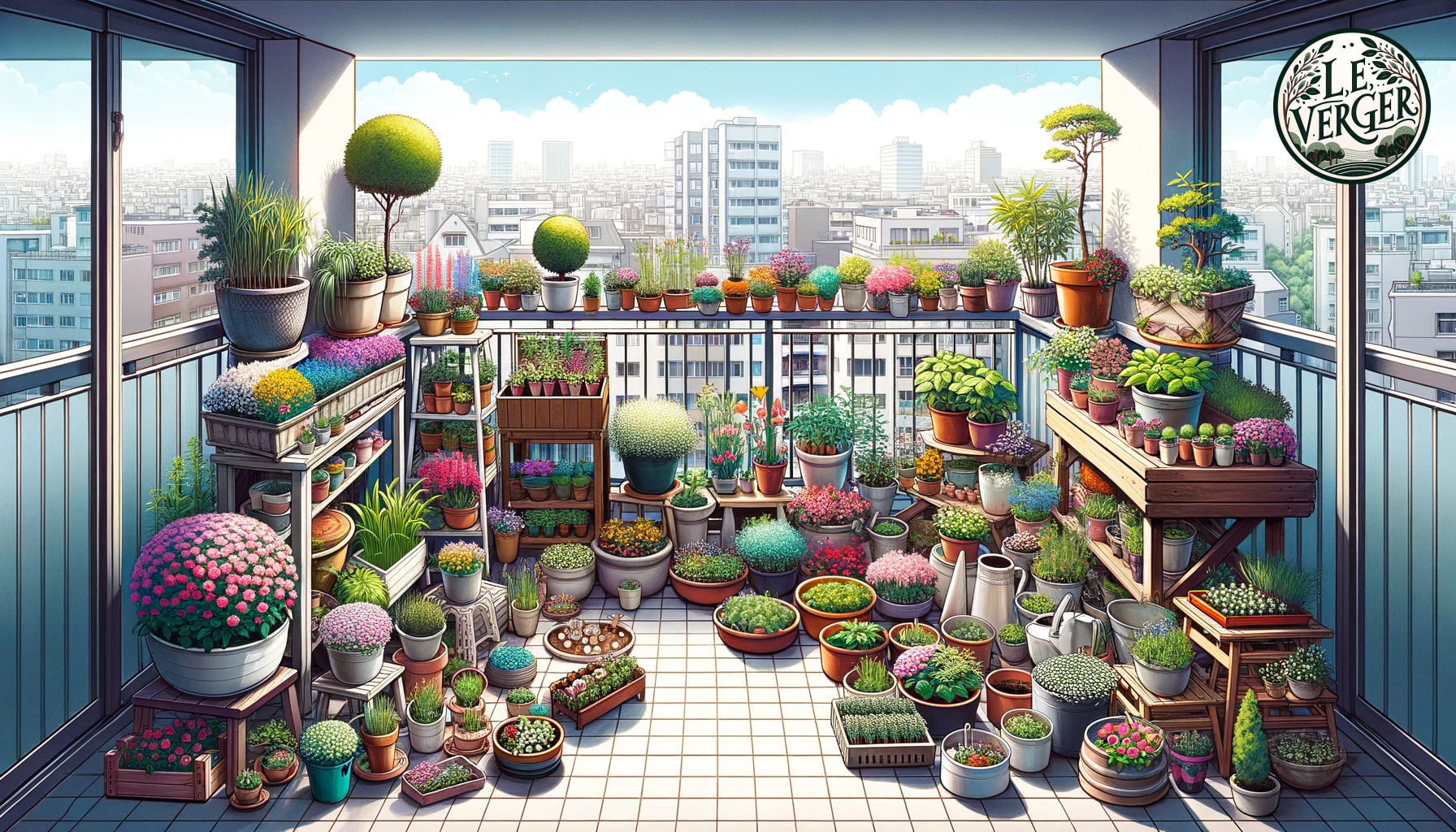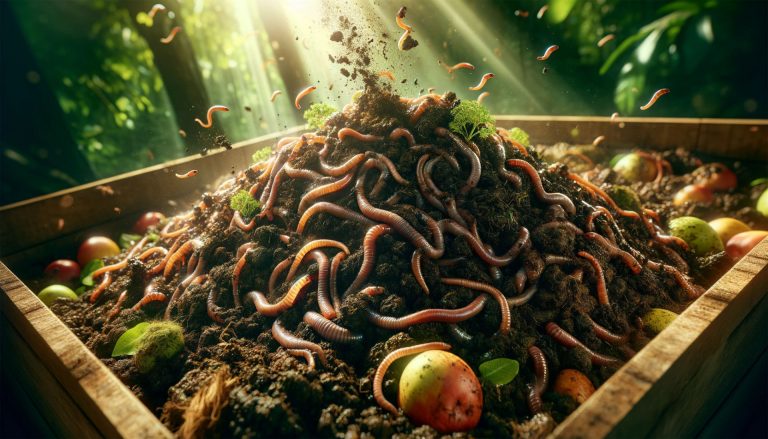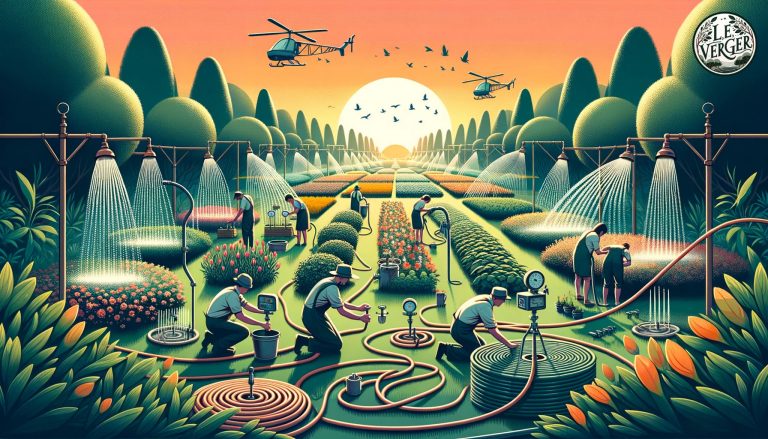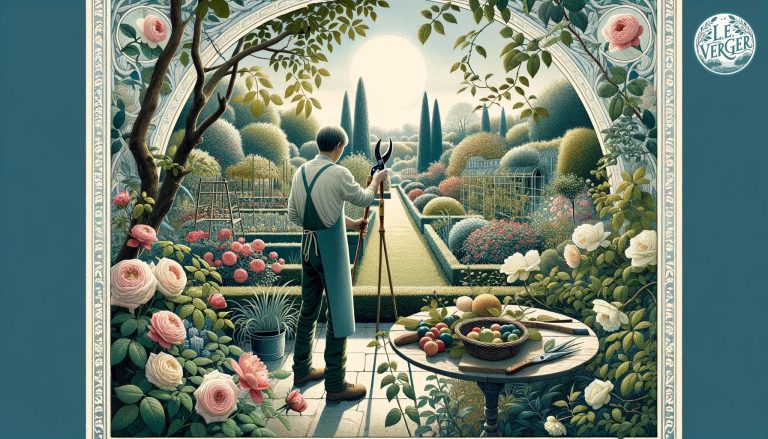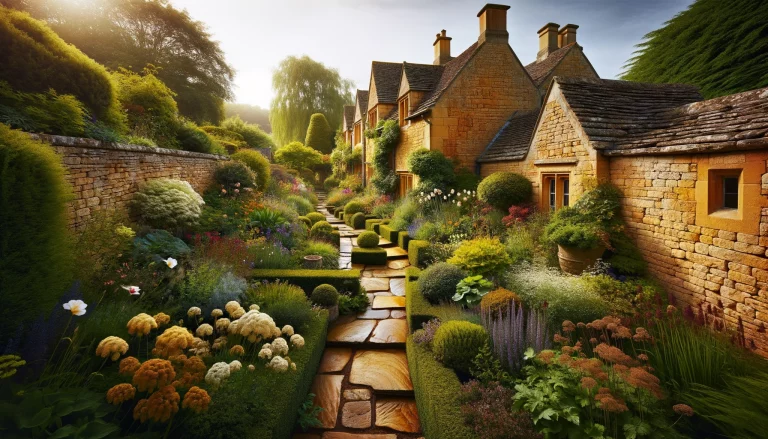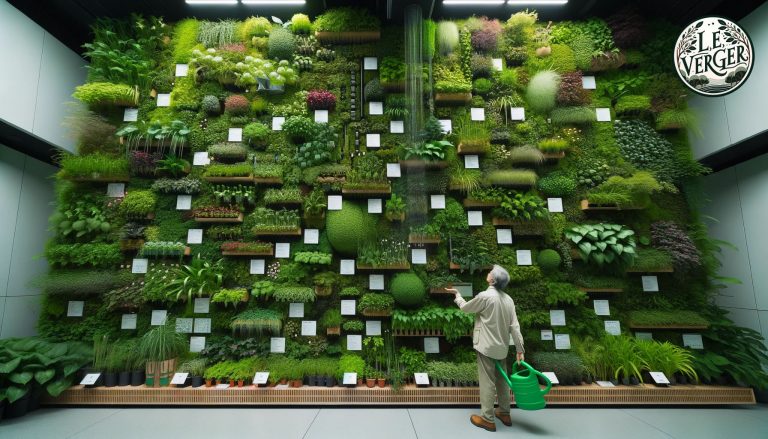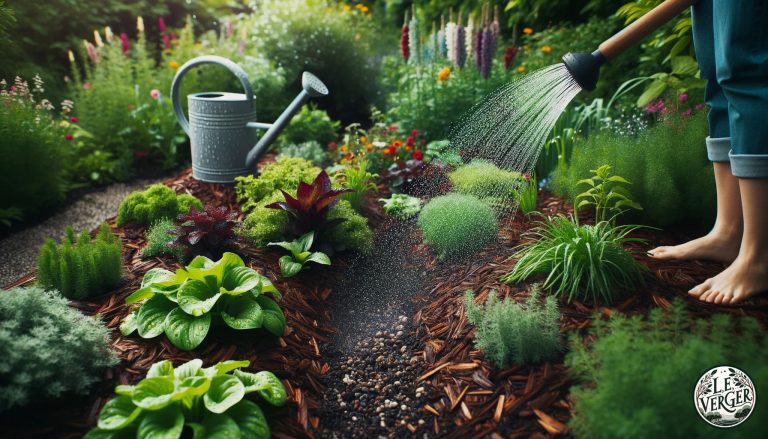Container Gardening: Cultivating Beauty in Limited Space
Limited by space in your garden? Discover container gardening—a gateway to a variety of plants in small spaces. Dive in, and transform your window sill or patio into a green haven with our easy tips.
If you’re someone who loves the beauty of nature but has limited space to cultivate a garden, then container gardening might be the perfect solution for you. Container gardening is a versatile and accessible way to bring the joy of gardening to any space, no matter how small. By using containers, pots, and planters, you can create stunning displays of flowers, herbs, vegetables, and even small trees on patios, balconies, and windowsills.
Understanding container gardening is essential to get started. It is a method of growing plants in containers rather than in the ground. Choosing the right containers is crucial to ensure that your plants remain healthy and thrive. You can use almost anything as a container, from traditional terracotta pots to old buckets and even teapots. Selecting suitable plants is also vital. Not all plants are suitable for container gardening, so it’s essential to choose plants that can thrive in a confined space.
Creating visual appeal is another critical aspect of container gardening. You can use different colors, textures, and heights of plants to create a visually appealing display. You can also use different types of containers to add interest. Container gardening is an excellent way to enjoy the beauty of nature in limited spaces. It’s also a great way to get started with gardening if you’re a beginner.
Key Takeaways
- Container gardening is a versatile and accessible way to cultivate a garden in limited spaces.
- Understanding container gardening, choosing the right containers, and selecting suitable plants are crucial to get started.
- Creating visual appeal by using different colors, textures, and heights of plants is essential for a stunning display.
Understanding Container Gardening
If you live in a small space and want to cultivate a garden, container gardening is the perfect solution for you. Container gardening is a type of gardening where plants are grown in containers instead of the ground. It is a flexible and mobile way to garden that allows you to grow plants in any space, no matter how limited.
Containers come in many shapes and sizes, from small pots to large planters. You can use almost anything as a container, as long as it has drainage holes and is large enough to accommodate the plant roots. Some popular containers for container gardening include plastic pots, ceramic pots, wooden planters, and hanging baskets.
One of the benefits of container gardening is its flexibility. You can move your containers around to take advantage of the best growing conditions, such as sunlight and shade. You can also easily change the look of your garden by rearranging your containers or switching out the plants.
Another benefit of container gardening is its mobility. If you need to move or relocate, you can easily take your garden with you. Container gardening is also a great option for renters who may not have the option to plant in the ground.
Overall, container gardening is a versatile and accessible way to bring the joy of gardening to any space, no matter how limited. With a little creativity and some basic knowledge, you can create a beautiful and thriving garden in containers.
Choosing the Right Containers
When it comes to container gardening, choosing the right containers is crucial to ensure that your plants thrive. Here are some things to consider when selecting your containers:
Size and Material
The size of your container will depend on the type of plant you want to grow. Smaller plants like herbs can thrive in a small container, while larger plants like tomatoes will need a bigger container. When it comes to material, plastic containers are lightweight and easy to move around, while terracotta containers are more attractive but can be heavy and prone to cracking. Wooden containers are also an option, but they may require more maintenance to prevent rotting.
Drainage Requirements
Proper drainage is essential for container gardening. Make sure your containers have adequate drainage holes to prevent water from pooling and drowning your plants. If your container doesn’t have drainage holes, you can drill them yourself. Additionally, make sure to use a well-draining soil mix to prevent waterlogging.
By considering the size and material of your containers and ensuring proper drainage, you can set your container garden up for success. Happy planting!
Selecting Suitable Plants
When it comes to container gardening, selecting the right plants is crucial to ensure that they thrive in a limited space. Here are some suitable plants for container gardening:
Flowering Plants
Petunias, marigolds, and geraniums are great choices for adding vibrant colours to your container garden. These plants are easy to care for and will bloom for a long time. They also attract pollinators like bees and butterflies, which can help your garden flourish.
Herbs and Vegetables
Basil, mint, lettuce, and peppers are some of the best herbs and vegetables to grow in containers. They do not require much space and can be grown in small pots. These plants also make great additions to your kitchen, allowing you to have fresh herbs and veggies right at your fingertips.
Ornamental Grasses and Dwarf Fruit Trees
Ornamental grasses like fountain grass and blue fescue can add texture and interest to your container garden. Dwarf fruit trees like lemon and apple trees can also be grown in containers, providing you with fresh fruit in a limited space.
When selecting plants for your container garden, make sure to consider their size, growth rate, and water requirements. Choose plants that complement each other in terms of colour and texture. Additionally, ensure that the pots you choose are the appropriate size for your plants to allow them to grow and thrive.
By selecting suitable plants for your container garden, you can cultivate beauty in even the smallest of spaces.
Planting and Nurturing
Container gardening is an excellent way to create a beautiful garden in limited space. With the right planting and nurturing techniques, you can grow a variety of plants in pots and containers. Here are some tips to help you get started:
Soil and Fertiliser Selection
Choosing the right soil and fertiliser is crucial for the success of your container garden. Use high-quality potting soil that is specifically designed for container gardening. This type of soil is lightweight, drains well, and has excellent moisture retention. It also contains organic matter that provides essential nutrients to your plants.
For regular fertilization, you can use either slow-release or water-soluble fertiliser. Slow-release fertiliser provides a steady supply of nutrients to your plants over time, while water-soluble fertiliser provides a quick boost of nutrients. Use a balanced fertiliser with equal amounts of nitrogen, phosphorus, and potassium.
Watering and Maintenance
Watering and maintenance are critical for the health of your container garden. Overwatering can lead to root rot and other problems, so it’s essential to water your plants only when they need it. Use a watering can to water your plants thoroughly, and make sure the soil is moist but not waterlogged.
Regular fertilization is also essential for the health of your plants. Follow the instructions on your fertiliser package to determine how often to fertilise your plants. In addition to fertiliser, you can also add organic matter to your soil to improve moisture retention and provide additional nutrients.
Pruning and Deadheading
Pruning and deadheading are essential for maintaining the shape and health of your plants. Use gardening gloves to protect your hands and prune your plants regularly to remove any dead or damaged leaves or stems. This will encourage new growth and help your plants stay healthy.
Deadheading, or removing spent flowers, is also essential for maintaining the appearance of your plants. This will encourage your plants to produce more flowers and help them stay healthy and vibrant.
By following these tips for planting and nurturing your container garden, you can create a beautiful and thriving garden in limited space. With regular maintenance and care, your container garden will provide you with joy and beauty for years to come.
Creating Visual Appeal
Container gardening is a great way to add colour and creativity to your indoor and outdoor spaces, making them more vibrant and visually appealing. Here are some tips to help you create visual appeal in your container garden.
Colour and Creativity
One of the best things about container gardening is the ability to play with colour and creativity. You can mix and match different plants, flowers, and foliage to create a beautiful and unique display. Consider using contrasting colours to create a bold statement, or complementary colours for a more harmonious look. You can also experiment with different textures and shapes to add depth and interest to your container garden.
Vertical Gardening
Vertical gardening is a great way to maximize space and create a stunning visual display. You can use trellises, arches, and hanging baskets to add height and dimension to your container garden. This is especially useful if you have limited horizontal space. Consider using trailing plants and vines to create a cascading effect, or tall plants to create a focal point.
Arranging Containers
Arranging containers is an important part of creating visual appeal in your container garden. You can arrange containers in groups to create a cohesive look, or scatter them around your space for a more eclectic feel. Consider using window boxes to add a touch of charm to your windows, or arranging containers of different sizes and shapes to create a dynamic display.
In conclusion, creating visual appeal in your container garden is all about playing with colours, creativity, and vertical gardening. With a little bit of imagination and some careful planning, you can create a stunning and visually appealing container garden that will brighten up any space.
Benefits of Container Gardening
If you’re looking to add some greenery to your limited space, container gardening is the perfect solution. Here are some of the benefits of container gardening:
Flexibility
One of the main advantages of container gardening is its flexibility. Containers allow you to garden in spaces with limited soil, making gardening possible for renters and urban dwellers. You can place containers on your balcony, patio, or even indoors near a sunny window. This flexibility also makes it easier to move your plants around to find the perfect spot for them.
Space-saving
Another great benefit of container gardening is its space-saving aspect. With container gardening, you can grow a variety of plants in a small area. This makes it perfect for apartment residents and anyone with a small backyard. You can place containers on shelves, hang them from the ceiling, or stack them to maximize space.
Greener
Container gardening is also a greener option compared to traditional gardening. Since you are using containers, you can control the soil quality and reduce the use of pesticides and herbicides. Additionally, you can choose to use organic soil and fertilizers to make your garden even more eco-friendly.
Enriching
Container gardening can also be a great way to enrich your life. Gardening has been shown to reduce stress and anxiety, improve mood, and provide a sense of accomplishment. It can also be a fun and educational activity for families to do together.
Tranquility
Finally, container gardening can provide a sense of tranquility. Being surrounded by greenery can help you relax and unwind after a long day. It can also be a great way to connect with nature and appreciate the beauty of the world around us.
Overall, container gardening is a great way to cultivate beauty in limited space while also enjoying the many benefits it has to offer.
Container Gardening in Limited Spaces
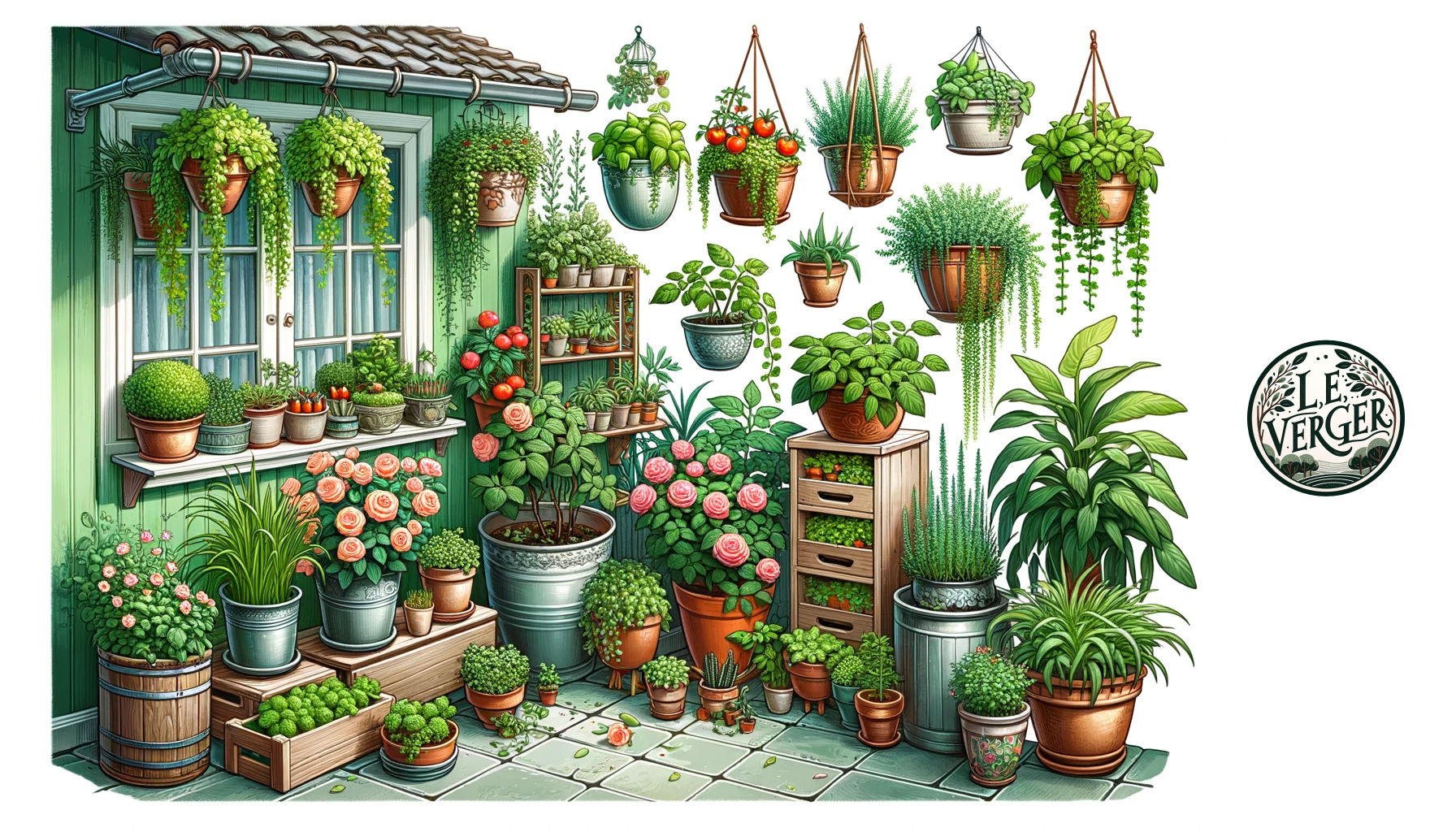
If you have limited outdoor space, container gardening is a versatile and accessible way to bring the joy of gardening to any space, no matter how small. By using containers, pots, and planters, you can create stunning displays of flowers, herbs, vegetables, and even small trees on your balcony, patio, windowsill, or small garden.
Balconies and Patios
If you have a small balcony or patio, container gardening is the perfect way to add some greenery and colour to your outdoor space. You can use pots, planters, and hanging baskets to create a beautiful and functional garden. Consider the size and weight of the containers, as well as the amount of sunlight your balcony or patio receives. You can also use vertical space by hanging plants from a trellis or wall-mounted planter.
When choosing plants, consider the amount of sunlight your balcony or patio receives. If your space is shaded, choose plants that thrive in low-light conditions, such as ferns, hostas, and impatiens. If your space is sunny, choose plants that require full sun, such as tomatoes, peppers, and herbs like basil and rosemary.
Windowsills and Small Gardens
If you have a small garden or limited outdoor space, container gardening is a great way to grow your own herbs, vegetables, and flowers. You can use window boxes, hanging baskets, and pots to create a beautiful and functional garden on your windowsill or small garden.
When choosing plants, consider the size and weight of the containers, as well as the amount of sunlight your windowsill or small garden receives. If your space is shaded, choose plants that thrive in low-light conditions, such as lettuce, spinach, and herbs like parsley and cilantro. If your space is sunny, choose plants that require full sun, such as tomatoes, peppers, and herbs like thyme and oregano.
With a little creativity and planning, container gardening can help you cultivate beauty in even the smallest of spaces.
Comprehensive Guide for Beginners
If you are new to container gardening, don’t worry! This comprehensive guide will help you get started and cultivate beauty in limited space.
Selecting the Right Location
When choosing a location for your container garden, consider the amount of sunlight the area receives. Most plants require full sun, which means at least six hours of direct sunlight per day. If your space doesn’t receive enough sunlight, consider using plants that can tolerate partial shade.
Another important factor to consider is accessibility. Make sure your container garden is located in an area that is easy to reach and maintain. You don’t want to have to climb over obstacles or move heavy containers every time you need to water or prune your plants.
Understanding Local Climate
It’s essential to understand your local climate when container gardening. Different plants thrive in different temperature and humidity conditions. Research the types of plants that are suitable for your area and choose plants that can tolerate the changing seasons.
In addition to temperature and humidity, consider factors such as wind and rainfall. Wind can damage delicate plants, while heavy rainfall can cause waterlogging and root rot. Make sure your containers have proper drainage and are protected from strong winds.
Space Utilisation
Limited space doesn’t have to limit your creativity. With container gardening, you can utilise vertical space and create layers of plants. Hanging baskets and trellises are great options for adding height and depth to your container garden.
When selecting containers, choose ones that are appropriate for the size of the plants you want to grow. Large containers can accommodate more plants and retain moisture better, while smaller containers are easier to move and can be used for smaller plants.
By following these tips, you can create a beautiful container garden even with limited space.
Frequently Asked Questions
What are the best containers for limited space gardening?
When it comes to container gardening, there are a variety of options available. Some of the best containers for limited space gardening include hanging baskets, window boxes, and small pots. Look for containers that are lightweight, durable, and have good drainage. You can even repurpose old items such as buckets, cans, and even shoes to use as containers.
What are some tips for successful container gardening?
Successful container gardening requires proper planning and care. Make sure your containers have good drainage and are filled with high-quality potting soil. Water your plants regularly and fertilize them as needed. Choose plants that are well-suited for your climate and the amount of sunlight your space receives. And don’t forget to prune and deadhead your plants to keep them healthy and looking their best.
How can I create a beautiful container garden on a budget?
Creating a beautiful container garden doesn’t have to break the bank. Look for plants that are on sale or clearance, or start your plants from seeds. You can also repurpose old containers or buy them secondhand. Get creative with your containers by painting them or adding decorative elements such as stones or shells. And don’t be afraid to mix and match different plants and colours to create a unique and eye-catching display.
What types of plants are best suited for container gardening?
Many types of plants are well-suited for container gardening, including herbs, vegetables, flowers, and even small trees and shrubs. Look for plants that are compact and have shallow root systems, as these will do well in containers. Some good options include cherry tomatoes, lettuce, petunias, and lavender.
What are the advantages of container gardening?
Container gardening has many advantages, including the ability to grow plants in limited spaces such as balconies, patios, and small yards. Containers also allow for greater control over soil quality and moisture levels, making it easier to grow healthy plants. Additionally, container gardening can be a great way to add colour and beauty to your outdoor space.
What are some common mistakes to avoid when container gardening?
When it comes to container gardening, there are a few common mistakes to avoid. These include overwatering your plants, using the wrong type of soil, and not providing enough sunlight. Make sure to choose plants that are well-suited for your space and climate, and don’t be afraid to experiment with different types of containers and plants. With a little planning and care, you can create a beautiful and thriving container garden in even the smallest of spaces.

